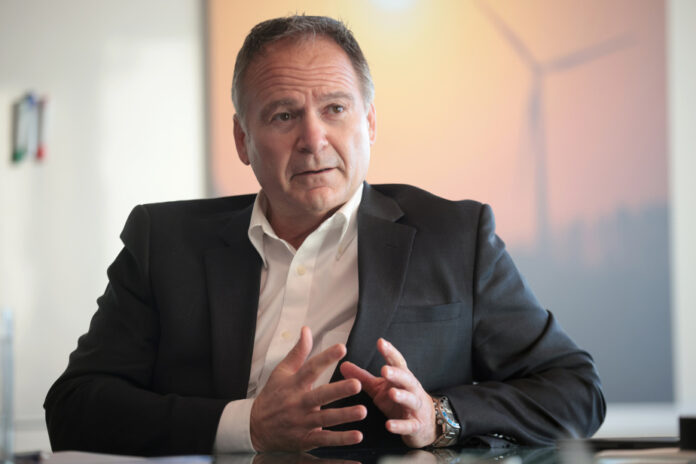(Montreal) Hydro-Québec’s plan could “wake up” the other Canadian provinces which will also have to invest massively in renewable energies, hopes the boss of Innergex.
Michel Letellier emphasized that Quebec was a step ahead of other Canadian provinces since a greater part of its energy consumption comes from hydroelectricity.
“In Quebec, approximately 42% of energy consumption is hydroelectricity. If Hydro-Québec must double its electricity production by 2050, imagine the other provinces, where renewable energy probably represents less than 30% in several markets in Canada. »
The delay of other Canadian provinces represents a business opportunity for private producers of renewable energy like Innergex, estimated its CEO. “We are very optimistic about Canada. Ontario, British Columbia, Saskatchewan and New Brunswick are our preferred markets (along with Quebec). »
Mr. Letellier expects that the majority of contracts obtained from Hydro-Québec will be in the wind energy sector. He also sees the possibility of obtaining contracts in the solar sector, or even opportunities for small hydroelectric plants.
Hydro-Québec plans to invest between 155 billion and 185 billion by 2035. Approximately 35,000 construction workers per year will have to be mobilized for the construction of new infrastructure, according to estimates from the state-owned company.
“Unusual” weather conditions continued to have an unfavorable effect on the production of the Longueuil company in the third quarter ended September 30.
Management mentioned that the summer had been “extremely” dry in British Columbia and that winds had been lighter in Quebec. Overall production thus reached 88% of the long-term average.
Unfavorable weather conditions in British Columbia have been mentioned by the company for several quarters. Mr. Letellier indicated that the situation seems to improve in October and November.
“The fourth quarter looks much better, although we are still early days. British Columbia is back. The rain forecast for November is good and we had a good October. »
Due to electricity production below long-term averages, the dividend remains lower than the cash flow generated by the company’s activities.
Over the past 12 months, the dividend represented 121% of cash flow, compared to 78% in the same period last year. The company estimates that this ratio would have been between 75% and 82% if production had been similar to weather averages.
RBC Capital Markets analyst Nelson Ng points out that the ratio would be higher, at 193%, taking into account other accounting elements such as expenses linked to projects in development and costs linked to acquisitions.
Questioned on the subject, Mr. Letellier avoided giving a definitive answer on the future of the dividend. “The dividend [reducing it] is not the first place we would look to raise capital tomorrow. […] We are always looking at how we can optimize our capital allocation and we have a lot of opportunities [for potential projects] in front of us. »
Mr Ng acknowledges that the company is reporting several interesting developments in its financing, including the sale of a 30% stake in its portfolio in France. “While the company has made significant progress on liquidity, we believe investors remain concerned about the balance sheet. We estimate the debt-to-earnings before interest, tax, depreciation and amortization (EBITDA) ratio to be as high as 10 times when excluding joint venture participation. »
The RBC Capital Markets analyst points out that the company has made progress on projects in development. He cites in particular the 329.8 megawatt (MW) Boswell Springs project in Wyoming, United States, which is ahead of schedule.
In the third quarter, Innergex revealed a net profit of 4.4 million compared to 21 million in the same period last year. Diluted earnings per share are 4 cents.
Revenues, for their part, stood at 292.2 million, compared to 268.7 million.
Before the results were released, analysts had expected a profit of 6 cents, according to financial data firm Refinitiv.
Innergex shares were up 23 cents, or 2.52 per cent, at $9.34 on the Toronto Stock Exchange in early afternoon trading.















